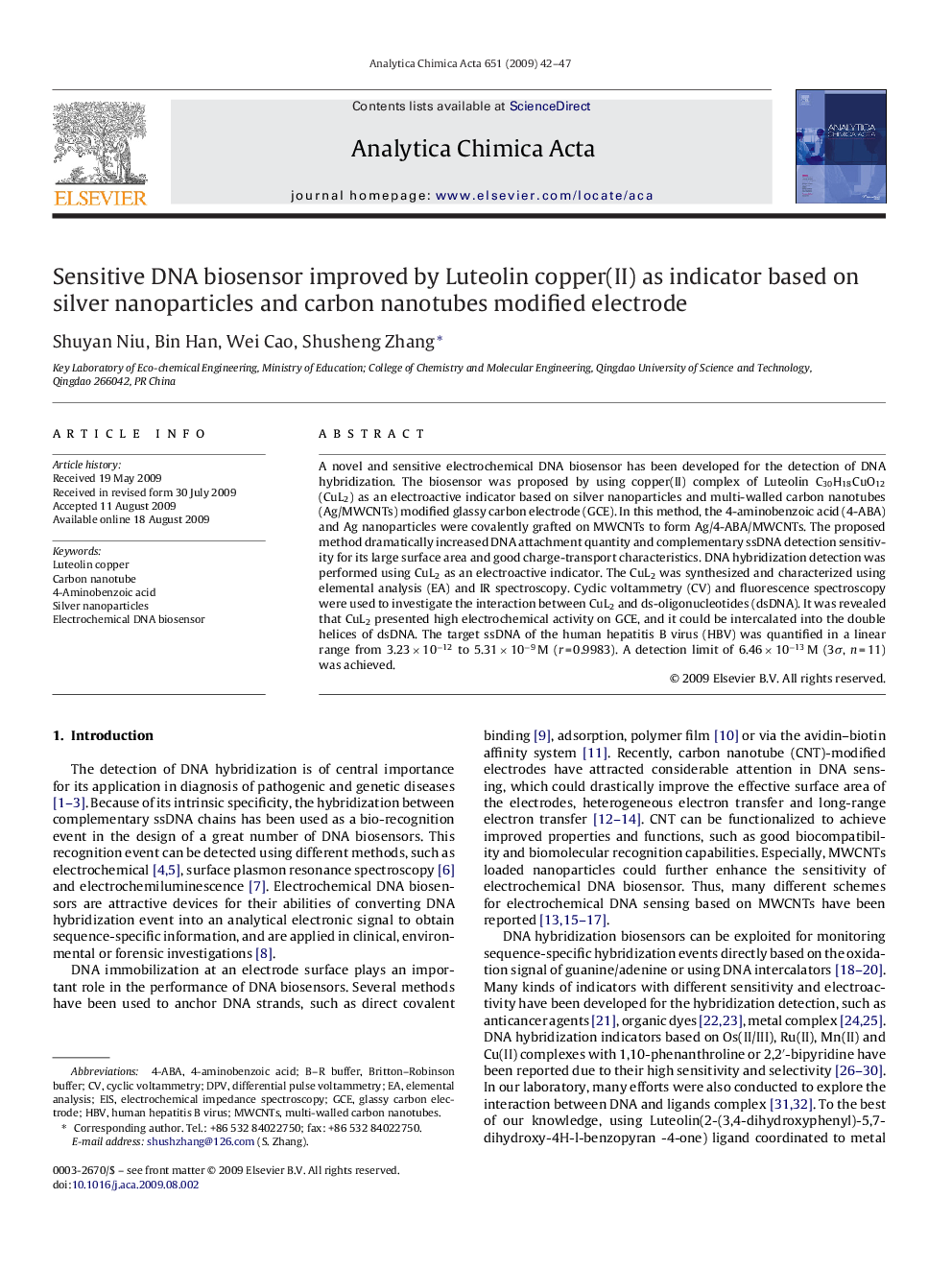| Article ID | Journal | Published Year | Pages | File Type |
|---|---|---|---|---|
| 1168025 | Analytica Chimica Acta | 2009 | 6 Pages |
A novel and sensitive electrochemical DNA biosensor has been developed for the detection of DNA hybridization. The biosensor was proposed by using copper(II) complex of Luteolin C30H18CuO12 (CuL2) as an electroactive indicator based on silver nanoparticles and multi-walled carbon nanotubes (Ag/MWCNTs) modified glassy carbon electrode (GCE). In this method, the 4-aminobenzoic acid (4-ABA) and Ag nanoparticles were covalently grafted on MWCNTs to form Ag/4-ABA/MWCNTs. The proposed method dramatically increased DNA attachment quantity and complementary ssDNA detection sensitivity for its large surface area and good charge-transport characteristics. DNA hybridization detection was performed using CuL2 as an electroactive indicator. The CuL2 was synthesized and characterized using elemental analysis (EA) and IR spectroscopy. Cyclic voltammetry (CV) and fluorescence spectroscopy were used to investigate the interaction between CuL2 and ds-oligonucleotides (dsDNA). It was revealed that CuL2 presented high electrochemical activity on GCE, and it could be intercalated into the double helices of dsDNA. The target ssDNA of the human hepatitis B virus (HBV) was quantified in a linear range from 3.23 × 10−12 to 5.31 × 10−9 M (r = 0.9983). A detection limit of 6.46 × 10−13 M (3σ, n = 11) was achieved.
